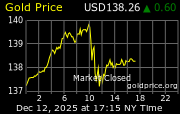A pullback in gold and silver seems due
week or early next week.
After the previous week’s interruption, net speculative length for COMEX gold resumed its climb, with 57.3 tonnes added this past week. The change in the net position was the result of speculative longs added (60.7 tonnes). The mild increase in short positioning (3.3 tonnes) detracted somewhat from the overall improvement. As already mentioned, the increase in net speculative length is not surprising, as futures market participants position ahead of the ECB’s second LTRO. ETFs appear to be of a similar mind to futures market participants, with 8.5 tonnes added to their gold holdings this past week. However, the increase is certainly nothing remarkable, so perhaps they share our scepticism that the rally will be sustained.
We maintain that gold will reach new highs in 2012, probably towards Q3. However, we’re still avoiding an overweight position in gold. Looking at COMEX silver, net speculative length continued to improve, marking an eighth week of steady gains, with a 236.5 tonne increase. This brings the total net speculative length added this year to 3,009.7 tonnes. Unlike in the previous week, this time the improvement was largely as a result of remarkable rise in long positions — of 345.0 tonnes. However, short positions were added for the first time in six weeks (108.5 tonnes).
Futures market positioning remains the strongest it has been since the dramatic fall during late September of
last year. However, the 108.5 tonne turnaround in short positioning makes us wary. ETFs also do not appear too confident in silver’s prospects, with only 28.4 tonnes added to their holdings this past week (after 106.2 tonnes were shed in the previous week). It is worth noting that net speculative length for silver as a percentage of open interest, at 19.1%, is well above the 2011 average of 15.7%. This is a clear indication of a market
that is becoming overstretched and consequently vulnerable to correction. We believe that silver’s downside
remains exposed, possibly towards $29/oz.


























